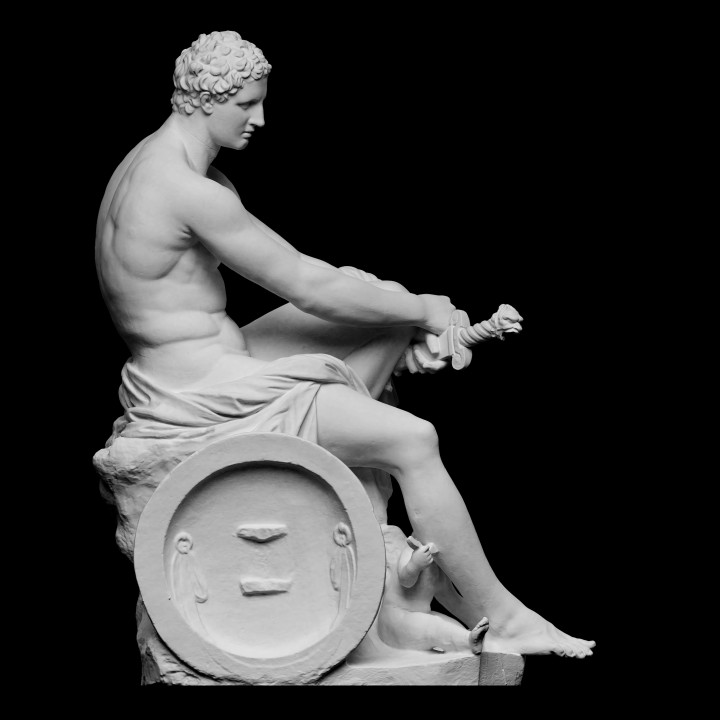
Ludovisi Ares
myminifactory
The Ludovisi Ares is a stunning Antonine Roman marble sculpture of Mars, skillfully crafted to represent the 2nd-Century version of a classic Greek original from the late 4th Century BC, attributed to Scopas or Lysippus, thus endowing the Roman god of war with his Greek name, Ares. As a young and beardless figure seated on a trophy of arms, Mars is accompanied by an Eros who playfully dances about his feet, drawing attention to the fact that even in repose, the god of war can be depicted as a captivating love object. Noted 18th Century connoisseur Johann Joachim Wickelmann praised the Ludovisi Ares as the most beautiful Mars preserved from Antiquity when he compiled the catalogue of the Ludovisi collection. Rediscovered in 1622, this magnificent sculpture was initially part of the temple of Mars built in 132 BCE in the southern Campus Martius area, where few remains can still be seen today. According to Pietro Santi Bartoli's notes, it was unearthed near the Palazzo Santa Croce in Rione Campitelli during the excavation of a drain. The sculpture eventually found its way into Cardinal Ludovico Ludovisi's collection formed at his grand villa and gardens near Porta Pinciana, built on the site where Julius Caesar and his heir Octavian (Caesar Augustus) once had their own villa. Young Bernini skillfully restored the sculpture by refinishing its surfaces and discreetly providing a right foot; he was also likely responsible for adding the cupid figure that is missing from G.F. Susini's bronze replica. The discovery of this exquisite sculpture was truly sensational. A small-scale bronze replica created by G.F. Susini showcases the Ludovisi Ares' beauty, while a bronze version is on display at the Ashmolean Museum in Oxford. Later, the Ludovisi Ares became one of the most popular attractions for English tourists during their grand tour; for example, Pompeo Batoni's portrait of John Talbot (later first Earl Talbot) depicts him admiring the statue to demonstrate his cultural sophistication and familiarity with renowned works of art. Even more affordable representations of the sculpture can be found: Giambattista Piranesi's son Francesco made an engraving of it at Villa Ludovisi in 1783. Copies of the Ludovisi Ares were incorporated into early museum collections, such as the Copenhagen Glyptotek, and had a lasting impact on generations of Neoclassical and academic students. In 1901, Prince Boncompagni-Ludovisi put the Ludovisi antiquities up for auction, and the Italian state purchased 96 objects. The rest were dispersed among museums in Europe and the US. Today, the Ares is preserved at the National Museum of the Terme housed in Palazzo Altemps, Rome.
With this file you will be able to print Ludovisi Ares with your 3D printer. Click on the button and save the file on your computer to work, edit or customize your design. You can also find more 3D designs for printers on Ludovisi Ares.
